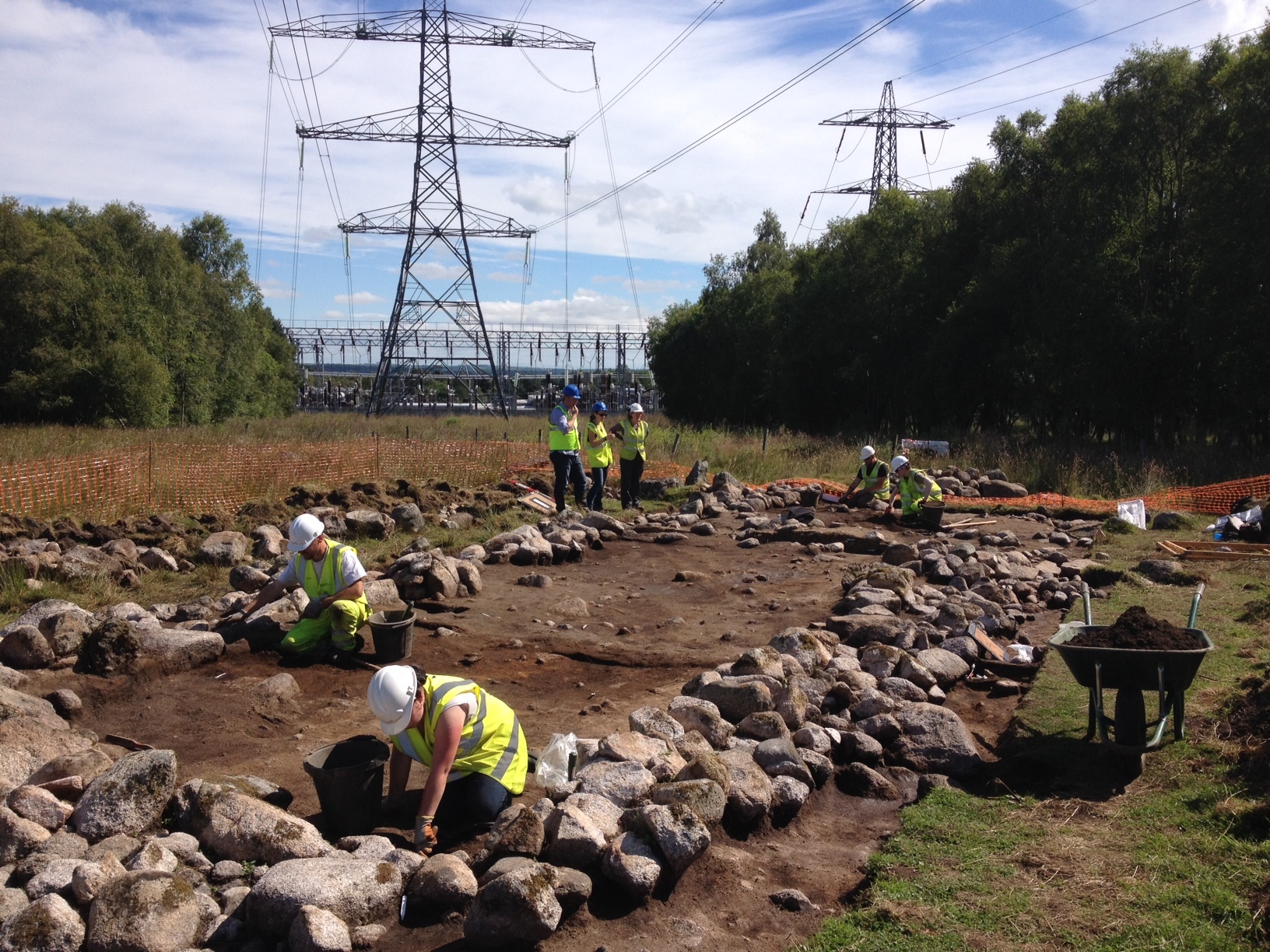Archaeologists have uncovered the remains of a “nationally significant” medieval farm building near an electrical substation in Aberdeenshire.
The barn, which dates back to the 14th or 15th century, was discovered at Leylodge, Kintore, while excavators carried out surveys on behalf of Scottish Hydro Electric (SHE) Transmission.
The organisation – which is responsible for the electricity network in the north and north-east of Scotland – always has an archaeologist on hand whilst carrying out site investigations in case historical artefacts lie beneath the ground.
Several objects have been discovered during previous surveys across Scotland.
But the team said that the floor deposits and numerous pieces of pottery found on this occasion would give historians vital clues about medieval farm living.
Maureen Kilpatrick of Guard Archaeology, which helped excavate the site, said it was rare to find a farm building that has lasted centuries of ploughing.
“Discoveries like this rarely survive in rural areas as the ground is usually used for rural purposes and is ploughed or used for cattle or livestock,” she said.
“This late medieval discovery is something quite special.”
Bruce Mann, an archaeologist with Aberdeenshire Council, said the discovery would help explore what farming life was really like.
“Rural buildings from this period are extremely rare in Scotland, and to be able to properly investigate one through archaeological excavation will help us hugely in understanding farming life at this time,” he said.
In 2012, SHE Transmission discovered a 5,000-year-old neolithic circle near Crieff while work was carried out on the construction of an access track for the Beauly Denny project in the Highlands.
Pottery, along with fragments of burnt bones and charcoal were also identified, which helped the team put a date on the find.
Keith Thomson, Environmental Project Manager with SHE Transmission, said it was important to be careful while carrying out work to preserve incredible discoveries.
“As a responsible developer, we choose to always have an archaeological specialist on site that can halt operations if archaeology is discovered to ensure that we do not damage what may be a significant find,” he said.
